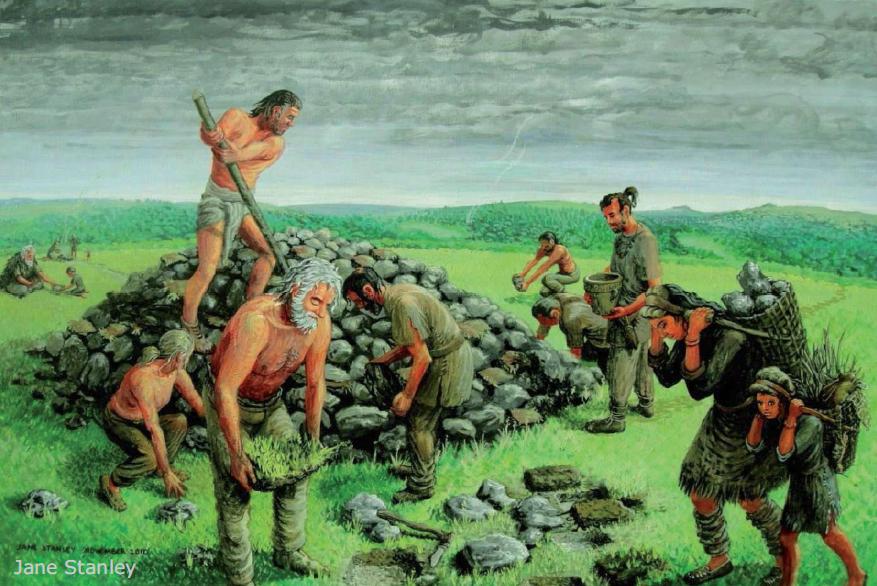Jane Stanley Paints Castle-An-Dinas August 21, 2014
Author: Beach Combing | in : Ancient, Contemporary, Modern , trackbackJane Stanley is an extremely talented archaeological reconstruction artist, based out of Cornwall. Castle-an-Dinas is an Iron Age fort in the middle of that county, a six-acre site second only, in terms of its natural charisma, to South Cadbury in Somerset. Put Jane and Castle-an-Dinas together and you get some of the best historical fiction around, though historical fiction by brush stroke.
Cornwall Council commissioned Jane to do a series of paintings of Castle-an-Dinas. What makes this series (to the best of my knowledge) unique is that they are not just different aspects of the site (a deer kill, a burial, a hosting…) They are the site over perhaps twenty five centuries. We put them up here with a link to Jane’s facebook page, hoping that neither she nor Cornwall Council will send a cease and desist order: they are available in a pdf online; also given the quality of Jane’s work we take pleasure in pointing out a recent book, A Brush with the Past. Beach’s credit card has presently maxed out but as soon as everything is back up and functioning… The image at the head of the post shows the creation of the two bronze age tombs at the head of Dinas: the second picture immediately below shows, instead, the Iron Age fort that followed on. As is typical of these sites the Iron Age was all too happy to leave the Bronze Age in place. The stronghold was crowned by two tombs from centuries before.
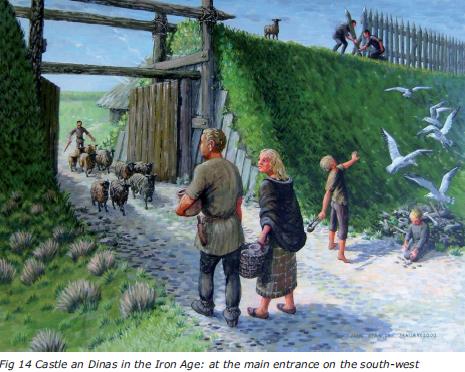
So far this is the normal fare of archeaeological art (albeit it at the best end of the market). Now though we turn to more recent times. In the first days of March 1646 [the subtitle on the drawing is wrong] a mauled Royalist army camped out in old Iron Age vallum. Cornwall was an overwhelmingly Royalist area, but here the decision was made to surrender. The fight was impossible by this date and two days later the Royal Standard was given up to the Parliamentarians at Bodmin: a black day. Britain would labour under the ‘Protector’ for fifteen wasted years.
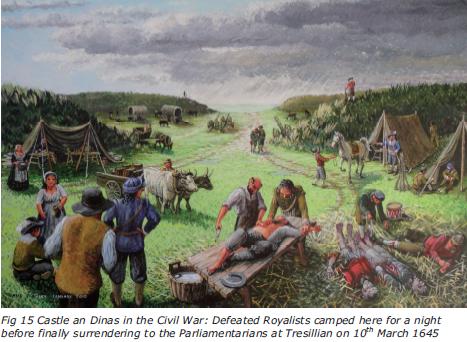
The next picture is a curiosity. Cornwall is mining country, but it was not until Britain’s straitened circumstances in the First World War that the decision was made to sink a shaft here in search of Wolfram of all things. Love the combination of Edwardian industrial might and Iron Age landscape.
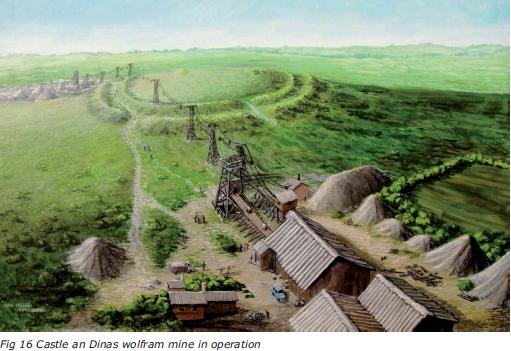
Then my favourite picture of them all. In the 1960s a Pennsylvanian archaeologist, Bernard Wailes carried out a multi-year professional dig at the site. Bizarrely, though this sometimes happens in archaeology, he never got his act together to actually publish the findings. There were two brief notes in a Cornish journal. Castle-An-Dinas waits another archaeological hero, preferably one though that has time to dig and write.
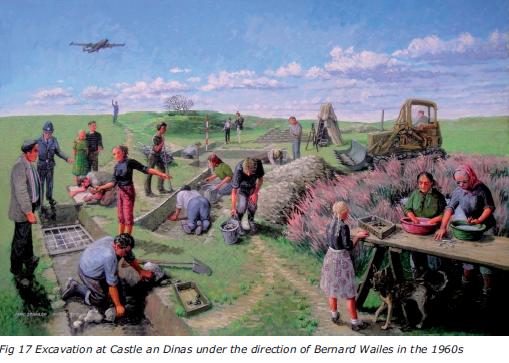
Here are the pictures that Jane missed or that Cornwall Council did not commission. First, there are Arthurian rumours about the fort: a bit of desperate Romano-British sheltering might have been fun. Second, the fort was used by smugglers in the modern period: barrels being rolled out of the way of excise? Third, there are reports of great furze fires in the modern period at night. By all accounts the whole countryside could see Castle-an-Dinas in flames for miles around.
Other great archeological art: drbeachcombing AT yahoo DOT com

